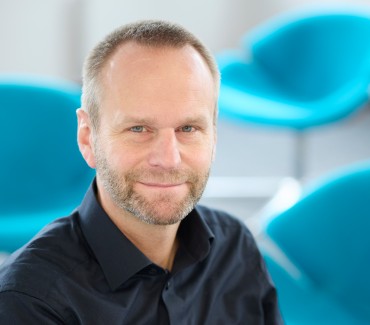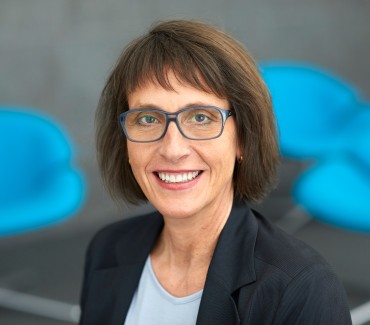2. When and how does IQWiG assess non-drug interventions?
Several pathways lead to an assessment of non-drug interventions by IQWiG. At the end of each of these processes, the Federal Joint Committee (G-BA) decides whether and under what conditions the costs of the method investigated will (continue to) be covered by the statutory health insurance (SHI) funds.
In this context, it is important to remember that within inpatient treatment in hospitals, the vast majority of interventions can be used and charged to the SHI funds without any assessment, whereas in outpatient treatment in doctors' practices, the costs are only reimbursed after a benefit assessment by IQWiG.
The pathways leading to an IQWiG assessment of a non-drug intervention
There are essentially four pathways by which IQWiG's assessment of a non-drug intervention is initiated:
New treatment methods in the outpatient sector (doctors' practices, etc.) must always be assessed before they are routinely reimbursed by the SHI funds. In the G-BA, an application for the assessment of a method can only be made by the G-BA members (i.e., for example, by SHI funds, but not by the manufacturer). However, manufacturers of medical devices can initiate an assessment indirectly, for example by submitting an application for testing (see pathway 4). For instance, the manufacturer of a non-invasive prenatal test applied for a testing study, whereupon the G-BA recognized that the evidence available did not require a testing study at all, but was already sufficient for the introduction of this method (read more: g-ba.de/presse/pressemitteilungen-meldungen/810; German version). Another possibility is an application by the manufacturer for inclusion in the catalogue of medical aids (“Hilfmittelverzeichnis”), so that the G-BA must start an assessment in the case of a truly new method.
Existing inpatient treatment methods are assessed when harm or the lack of benefit of a method becomes apparent. However, this is rarely the case. One example is arthroscopy for osteoarthritis of the knee. This treatment used to be performed frequently in Germany until studies showed that arthroscopy merely produces a placebo effect (read more: N11-01: Arthroscopy of the knee joint for gonarthrosis). Today, arthroscopy is no longer reimbursed by the SHI funds for this medical indication.
New inpatient treatment methods only need to be assessed in a few cases. This is because, in principle, it is desired that new methods become quickly available in the hospital. A method is only assessed if it
- includes a medical device
- is particularly invasive
- is truly new (leap innovation) and
- incurs relevantly higher costs.
Testing of new methods can primarily be applied for by medical device manufacturers of outpatient non-drug interventions, but also by providers in the inpatient sector. This non-public process is used if no sufficient evidence of the benefit of a method is available, but its potential as a treatment alternative is recognizable. IQWiG determines whether a method shows potential in a so-called assessment of potential. For example, it was examined whether poorly healing bone fractures can be healed with electromagnetic fields (read more: E17-08: Pulsed electromagnetic fields for bone healing disorders). A study is to be launched for this purpose.
If pathways 1 to 3 demonstrate a benefit of the treatment method, it will be included in the catalogue of the SHI funds, i.e. the costs for treatment with this method will be reimbursed.
If no benefit, but a potential, is identified in the assessment, the method can also enter testing on pathways 1 to 3 (as with pathway 4). The testing is conducted by means of studies and is intended to provide the findings required to assess the benefit of the method. IQWiG often makes an initial proposal on the design of a testing study as part of its assessment. The costs for an outpatient method in the context of a testing study are reimbursed for the study participants. If a high-quality study is already being conducted abroad, the G-BA does not conduct its own study, but waits for the results of this study. After the testing study, the G-BA decides on the benefit and reimbursement of the method.
However, if not even a potential of a treatment method can be identified, it will not be assessed in a testing study. In this case, the method is not included in the catalogue of the SHI funds, i.e. the costs for treatment with this method are not (or no longer) reimbursed.
While the procedures described are valid for all SHI funds, each fund also has certain options to offer certain services separately (statute-specific services). For example, some funds contribute to the costs of osteopathic treatment. Moreover, some services, such as telemonitoring of patients with heart failure, can be offered on a trial basis through model projects and regional selective contracts.
How are procedures specifically assessed to determine their benefit, harm or potential?
IQWiG receives the commission for an assessment of benefit or potential from the Federal Joint Committee (G-BA). As a rule, "benefit" is considered an added benefit versus standard care. If the benefit of the new method were lower, this would already be classified as harm. The assessment process at IQWiG extends over a maximum of one year for a benefit assessment for pathways 1 and 2, six weeks for pathway 3, and six weeks for an assessment of potential (pathway 4). The respective duration is prescribed by law and is related to the decision-making periods of the G-BA.
Pathways 1 (new outpatient method) and 2 (existing inpatient method)
For the benefit assessment by IQWiG for pathways 1 and 2, the decisive parameters are first defined: What does the treatment method involve? What is accepted as a control intervention or standard treatment? Which patients are treated with it and should therefore be included in a study? What goals does the patient want to achieve with the treatment?
Many of these questions are only decided after extensive discussions with patients, because IQWiG only considers direct outcomes that patients themselves experience or feel to be benefits. These include mortality, morbidity (specific symptoms or body functions that change noticeably), and quality of life.
IQWiG generally does not consider other, indirect outcomes, also referred to as surrogate outcomes, for the assessment of benefit or harm. These include laboratory findings (e.g. cholesterol level), imaging findings (e.g. X-rays), or physiological parameters (e.g. blood pressure).
Once the relevant outcomes have been defined, to ensure transparency, IQWiG publishes a protocol (report plan) describing the assessment process and the outcomes to be investigated.
Now the search begins for clinical studies that can provide answers to the questions about the benefits and harms of a method. For this purpose, IQWiG searches literature databases such as PubMed or the Cochrane Library and ask the manufacturers to provide their own studies and data. In this context, IQWiG makes sure that the manufacturer's data are complete and are allowed to be published later.
In order to be able to make well-founded conclusions on the benefits and risks of a treatment method, IQWiG prefers a specific type of study, so-called randomized controlled trials (RCTs). These are best able to prove causal relationships. However, they are often more complex to conduct than other study designs, which is why manufacturers also like to refer to non-randomized or non-controlled studies, so-called observational studies, which are, however, of limited informative value.
Data are extracted from the pool of relevant studies - if they exist - and summarized using statistical methods. IQWiG describes the results of these analyses, with the involvement of clinical experts, in a preliminary report, which already contains an initial positive or negative conclusion on the treatment method assessed.
All interested parties, such as manufacturers or scientific societies, may submit comments on the results and conclusions of this preliminary report. In this way, a discussion can be initiated about open and controversial points, special features of a method, and possible misunderstandings.
The results of this discussion are incorporated into the report as far as possible and published as a final report. On the basis of this IQWiG assessment, the G-BA finally decides whether or not the costs of a method will be reimbursed by the SHI funds, or whether a potential can be identified so that a testing study seems reasonable.
Pathway 3 (new inpatient method)
The assessment of high-risk medical devices (pathway 3) only covers a maximum of six weeks. This involves the assessment of whether the benefit, harmfulness or ineffectiveness of a method is to be regarded as proven. It is conducted on the basis of application documents from a hospital ("dossier"), which must be prepared in agreement with the manufacturer. The assessment results are published.
Pathway 4 (testing)
If only an assessment of potential was requested for an examination method instead of a benefit assessment (pathway 4), IQWiG’s assessment is based on the data and materials provided by the manufacturer. As a rule, the Institute has six weeks for this task. If no potential can be identified, no testing study is conducted. In this case, there is no public report and the examination method remains secret. The manufacturer can submit a new application for testing one year after rejection at the earliest.
Assessment of non-drug interventions
1. What are non-drug interventions?
2. When and how does IQWiG assess non-drug interventions?
3. What are the special challenges in the assessment of non-drug interventions?
4. Examples of the benefit, harm and potential of non-drug interventions



